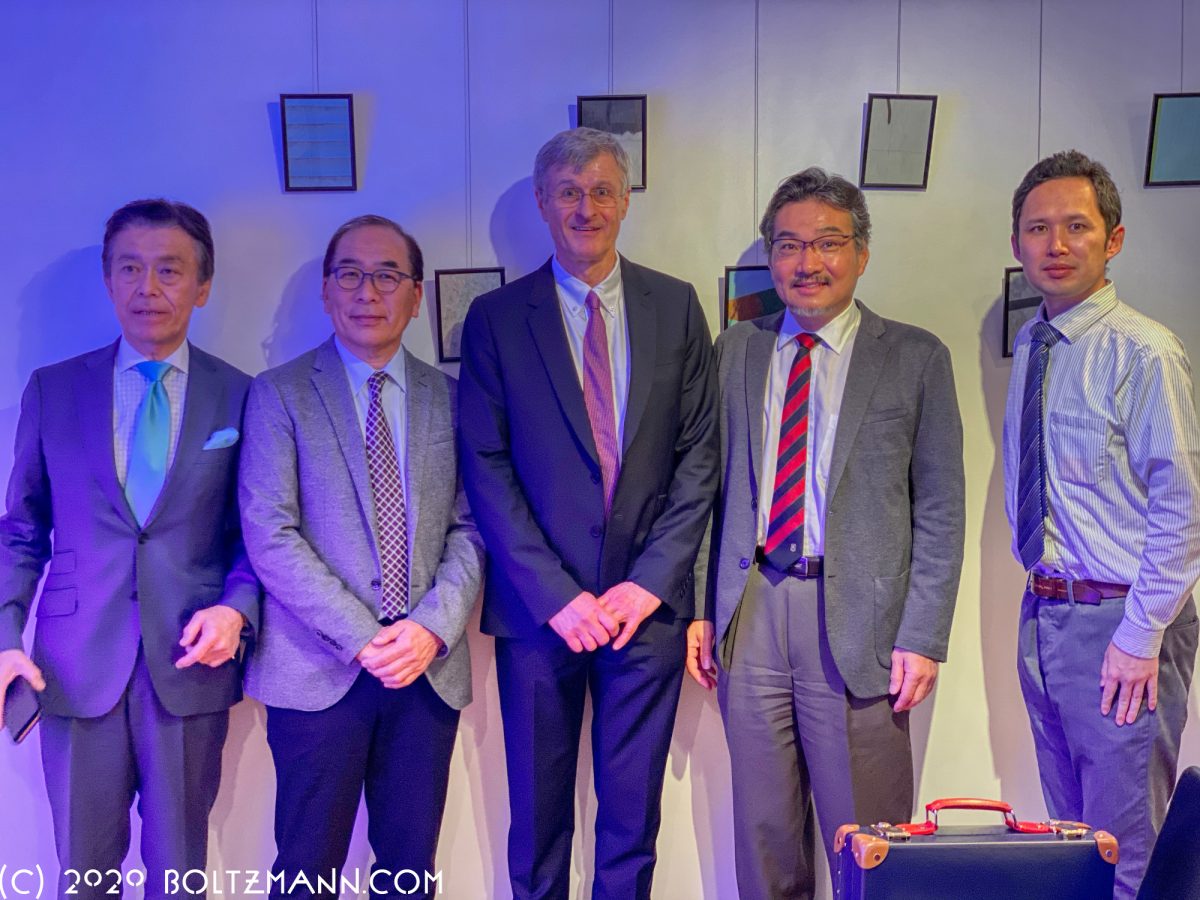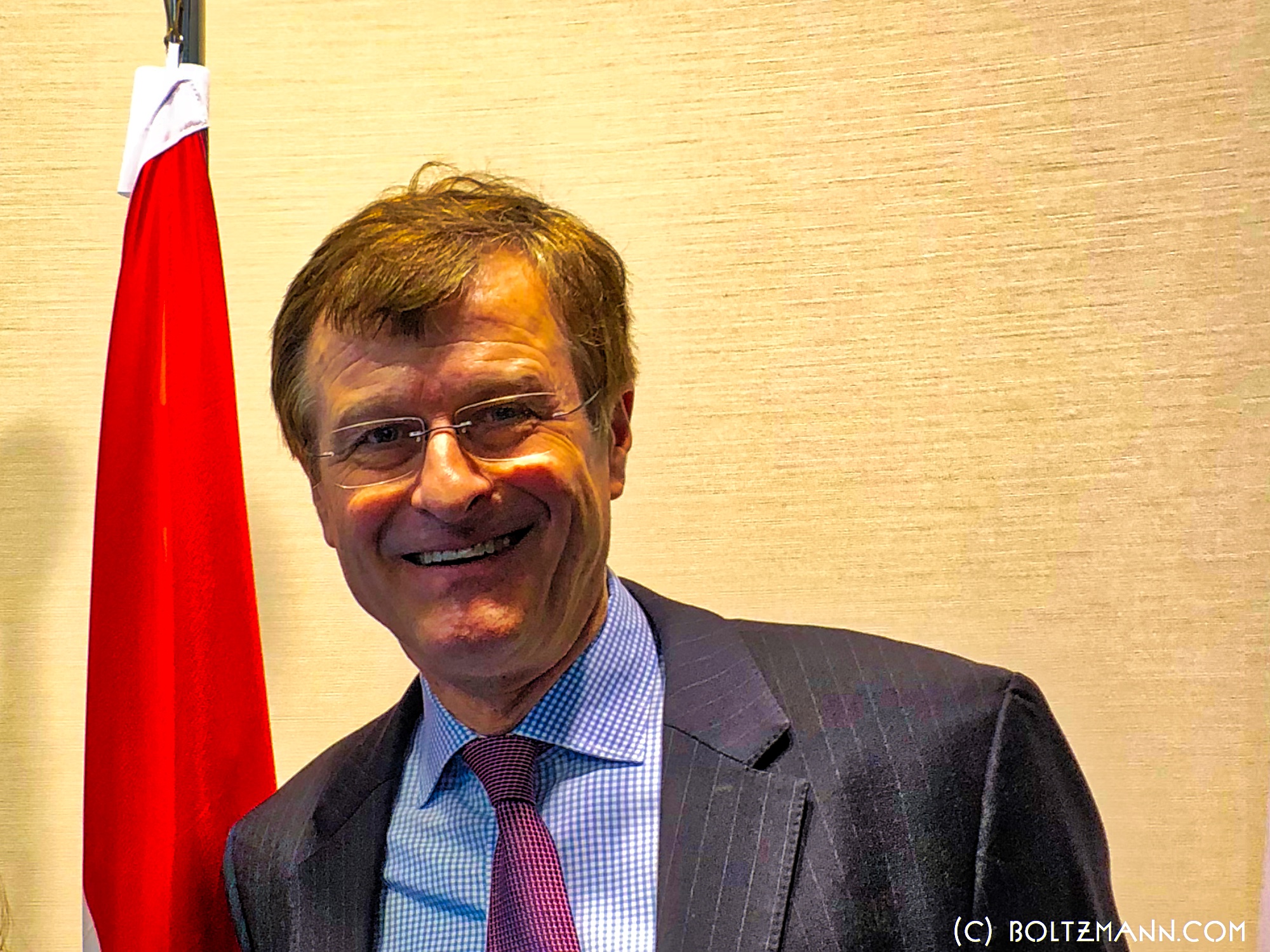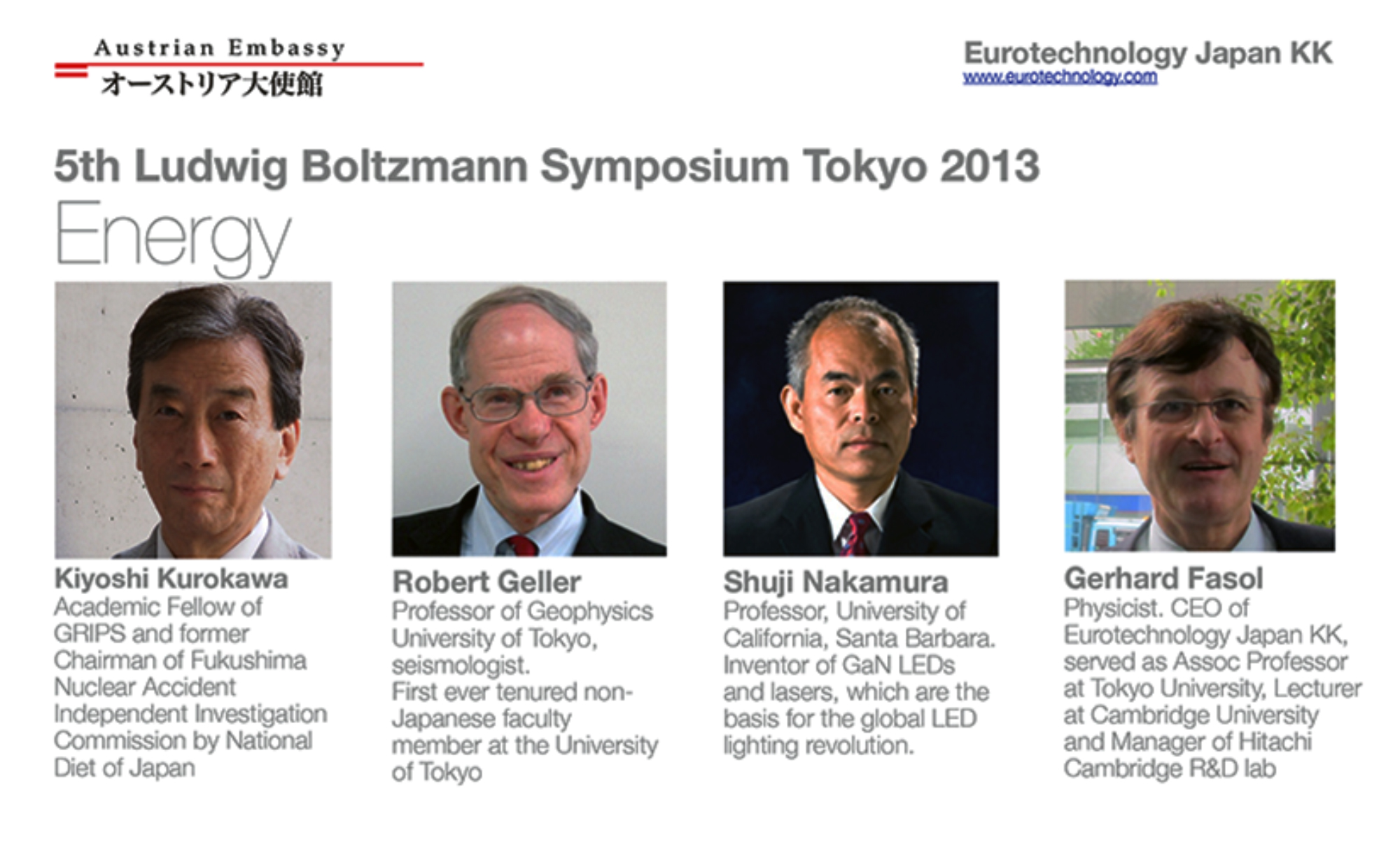Tag: Entropy
-

12th Ludwig Boltzmann Forum Tokyo 2020
Energy. Entropy. Leadership. Gerhard Fasol, Chair and Producer. 12th Ludwig Boltzmann Forum 2020, Thursday 20 February 2020 at the Embassy of Austria, Tokyo. Program click on links below to read summaries of keynote talks and see photographs Welcome by the Ambassador of Austria, Hubert Heiss. Gerhard Fasol, CEO and Founder, Eurotechnology Japan KK, Guest-Professor Kyushu…
-

Gerhard Fasol: Entropy, information and Ludwig Boltzmann
Entropy, information and Ludwig Boltzmann, 10th Ludwig Boltzmann Forum 20 February 2018 Gerhard Fasol CEO, Eurotechnology Japan KK, Board Director, GMO Cloud KK. former faculty Cambridge University and past Fellow, Trinity College Cambridge Ludwig Boltzmann 20 February 1844 – 5 September 1906 We use Ludwig Boltzmann’s results every day. Here are some examples: The definition…
-

5th Ludwig Boltzmann Forum Tokyo 2013
Gerhard Fasol, Chair “ENERGY” Wednesday, 20th February 2013, Embassy of Austria, Tokyo 14:00 Welcome by Dr. Bernhard Zimburg, Ambassador of Austria to Japan 14:10 Gerhard Fasol, “today’s agenda” 14:20 – 14:40 Robert Geller Professor of Geophysics University of Tokyo, seismologist. First ever tenured non-Japanese faculty member at the University of Tokyo “A seismologist looks at…